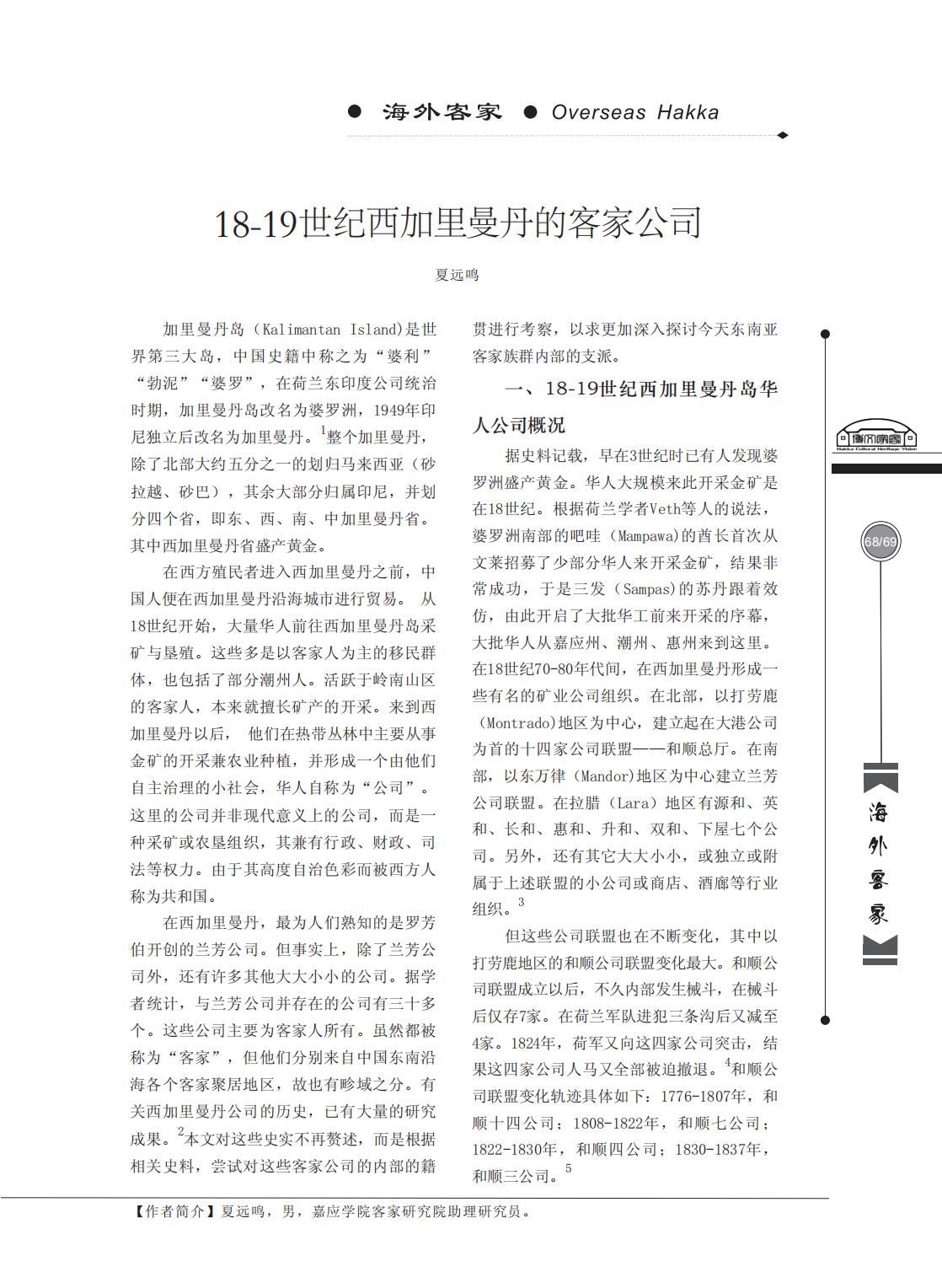Kalimantan Island (Kalimantan Island) is the world's third largest island, known in Chinese historical records as "Boli", "Bo Ni" and "Borneo", during the rule of the Dutch East India Company, Kalimantan Island was renamed Borneo, and after Indonesia's independence in 1949, it was renamed Kalimantan. The whole of Kalimantan, except for about one-fifth of the northern part belonging to Malaysia (Sarawak, Sabah), most of the rest belongs to Indonesia and is divided into four provinces, namely East, West, South and Central Kalimantan. Among them, the province of West Kalimantan is rich in gold.
Before Western colonists entered West Kalimantan, Chinese traded in the coastal cities of West Kalimantan. Beginning in the 18th century, a large number of Chinese traveled to West Kalimantan for mining and reclamation. These are mostly Hakka immigrant groups, including some Teochews. The Hakka, who are active in the mountains of Lingnan, are already good at mining minerals. After coming to West Kalimantan, they mainly engaged in gold mining and agricultural cultivation in the tropical jungle, and formed a small society governed by themselves, and the Chinese called themselves "companies". The company here is not a company in the modern sense, but a mining or agricultural organization with administrative, financial, judicial and other powers. It is called a republic by Westerners because of its high degree of autonomy.
